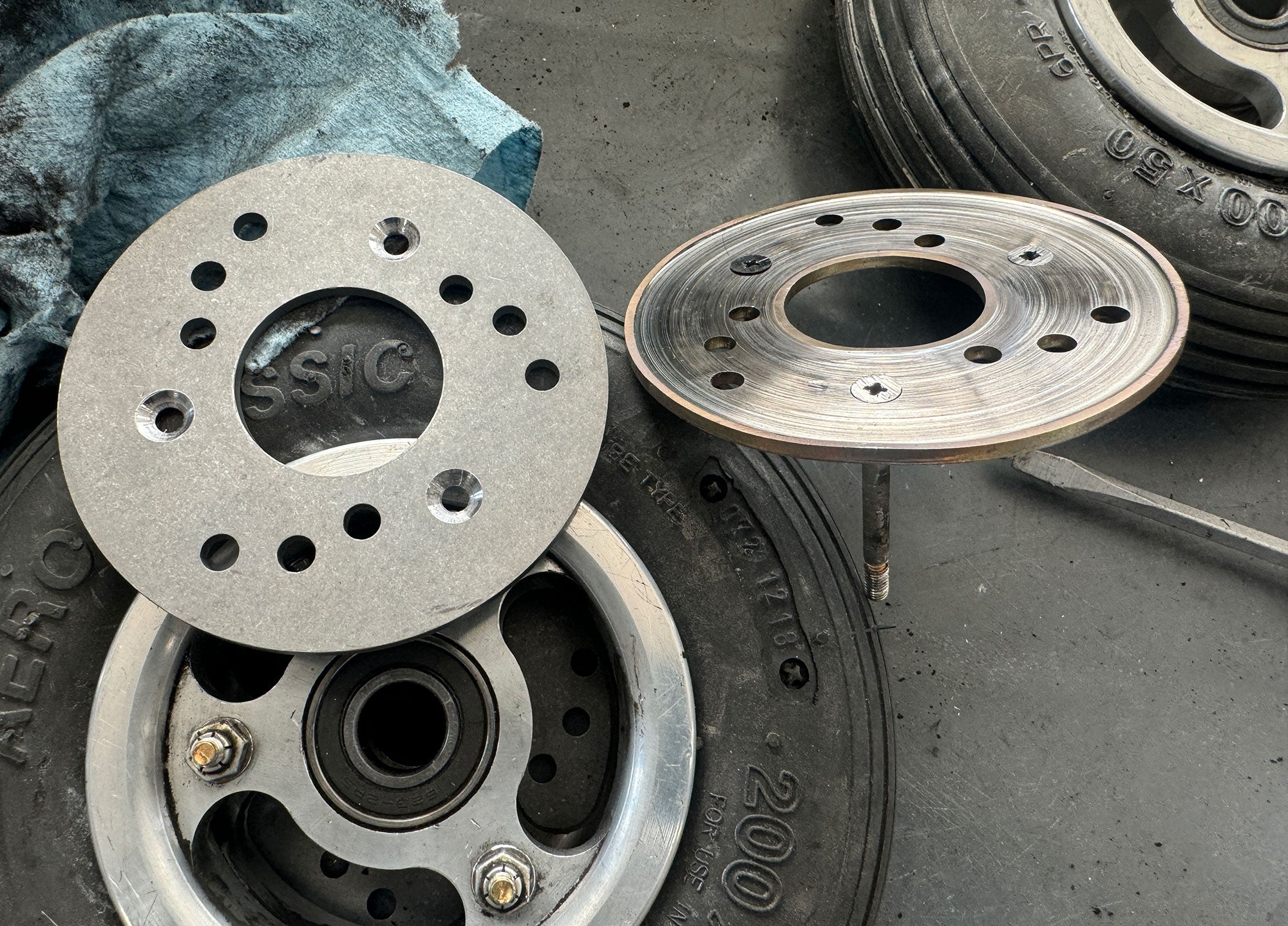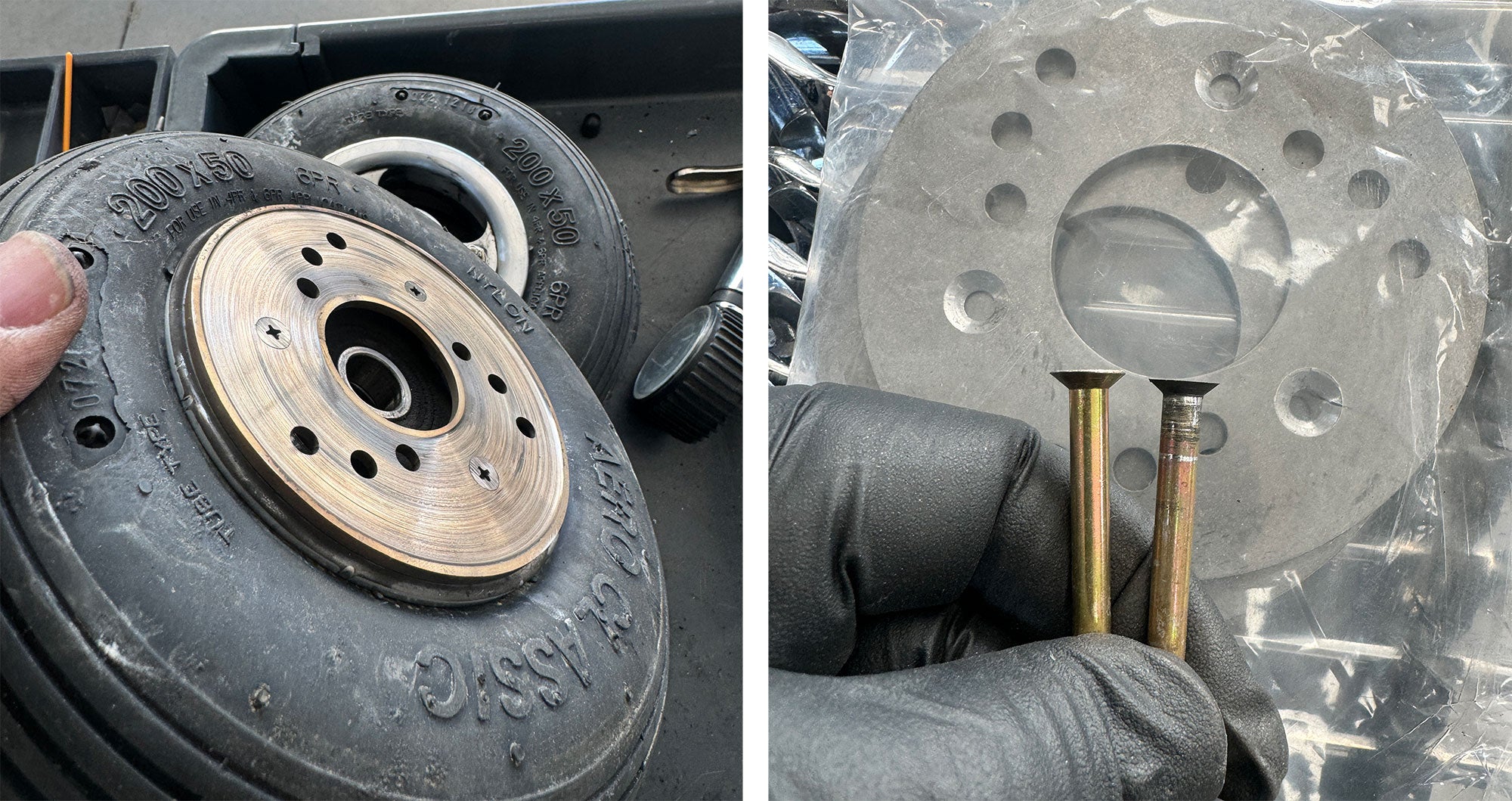These little wheels and tires are from our Subsonex JSX-2 micro jet, which now has 200 hours and probably 300-350 landings on it. There are four main gear tires (two on each main gear leg) and the brake disks are bolted to the inside of each wheel, with two brake pucks pushing out from a central brake housing, so all the braking on each disk is on one side. The disks are originally flat on both sides, and you can see just how deep the wear is by looking at the height of the “ridge” on the outer diameter. Interestingly enough, the pucks are barely worn, and Sonex has changed the brake disk to a different stainless allow to reduce wear and improve energy absorption.

You wouldn’t think that a little 1,000-lb MGW aircraft would require this much braking, but when your butt is sitting six inches off the pavement, a 60-knot touchdown seems pretty fast, and you do get on the brakes!

One interesting point about the brake wear is that the disk mounting bolts are countersunk head AN3’s, and also serve to hold the two halves of the wheel together. As the brake disk wears, the head of the bolt gets shaved down. Honestly I am not very concerned about the remaining thickness of the disk as much as I am concerned about the remaining amount of the bolt head, because at some point it might not have enough strength to keep the wheel together! So good practice is to change the bolts when you change the disks!













I don’t know if I would agree with the “this much braking” statement to begin with.
That rotor is, what, 5″ in diameter? I’ve ridden 220lb dirt bikes that have four or five times the swept area of those disks, not to mention at least twice the mechanical advantage against the rotor. And pads on both sides of the rotor instead of just one.
And this is a rotor for a 1000lb airplane, not my 220lb dirt bike.
From the heat distortion in that rotor, it looks like it is undersized for this application.With all that being said, I’m surprised they didn’t treat the brake rotors like jet engines treat starts: x number of landings, and replace the rotor (and hardware).
If I ever build a SubSonex, I suspect it will end up with a 200 landing limit for brake rotors.
With all that being said, you built a beautiful aircraft and I’ve loved following along in Kitplanes!